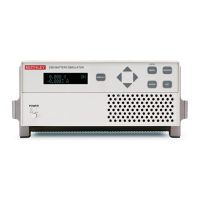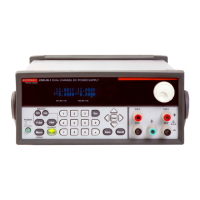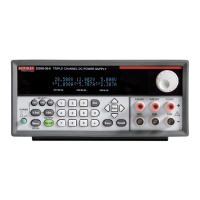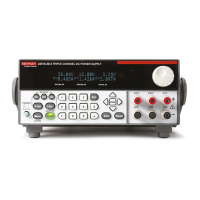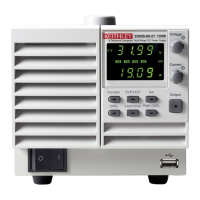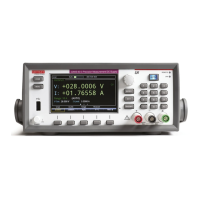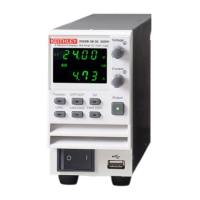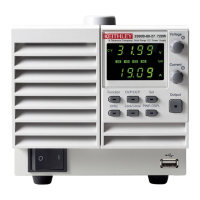2-14 Basic Power Supply Operation
Sink operation
Whenever a test circuit sources a voltage that exceeds the programmed supply voltage, the
power supply automatically becomes a sink instead of a source. It then dissipates power instead
of supplying power, while continuing to maintain the programmed supply voltage at its termi-
nals. Current (I
sink
) flows into the positive (+) terminal of the power supply rather than out of it.
Current readback is negative.
NOTE During sink operation, the power supply does not regulate current. It acts only as a
constant voltage load, not as a constant current load.
Figure 2-5 illustrates an application for sink operation. In Figure 2-5, the test circuit is a bat-
tery charging circuit; the power supply acts as a constant voltage battery load.
To keep the power supply in the current sink mode, safely, maintain the following condition:
• Ensure that the test circuit voltage remains greater than the programmed supply voltage.
• Ensure that the maximum sink current falls within the limits specified in Table 2-6.
CAUTION During sink operation, the current limit circuit of the power supply is not
operational, because it only limits current by limiting power supply output
voltage. During sink operation, your test circuit supplies net input voltage,
over which the power supply has no control. Therefore, you must ensure
that your test circuit sources current within the limits of Table 2-6. Failure
to source current within the limits of Table 2-6 can cause damage to the
power supply that is not covered by the warranty.
Table 2-6Table 2-6
Sink current limits
Programmed
supply voltage
Maximum allowable sink current
0V to 5V 2.0A
5V to 15V 2.0A - [0.1A/V) × (Programmed supply voltage - 5V)]
Charger Circuit
I sink
3.0V
+
_
RV
4.2V
Power Supply
+
_
Figure 2-5
Sink operation example
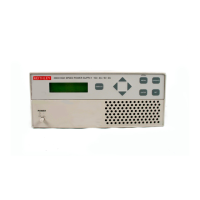
